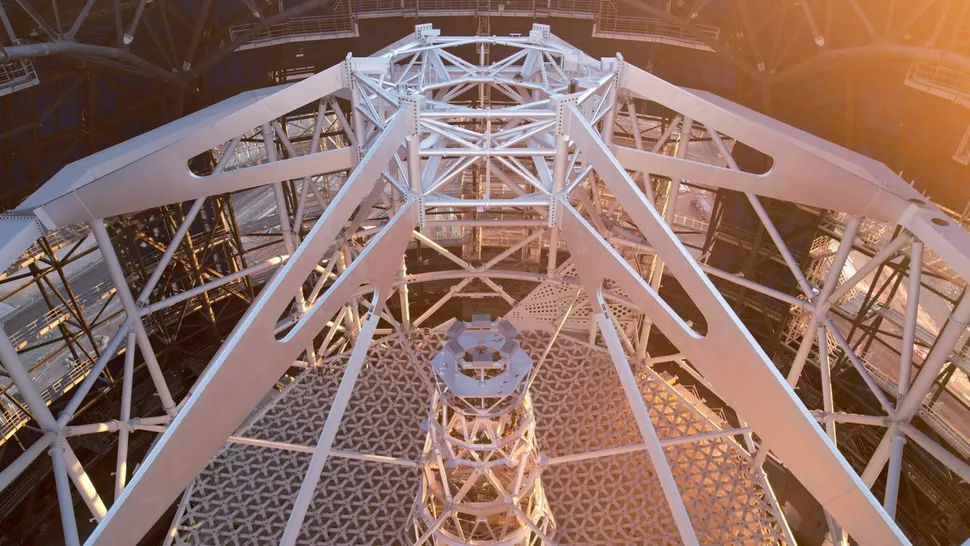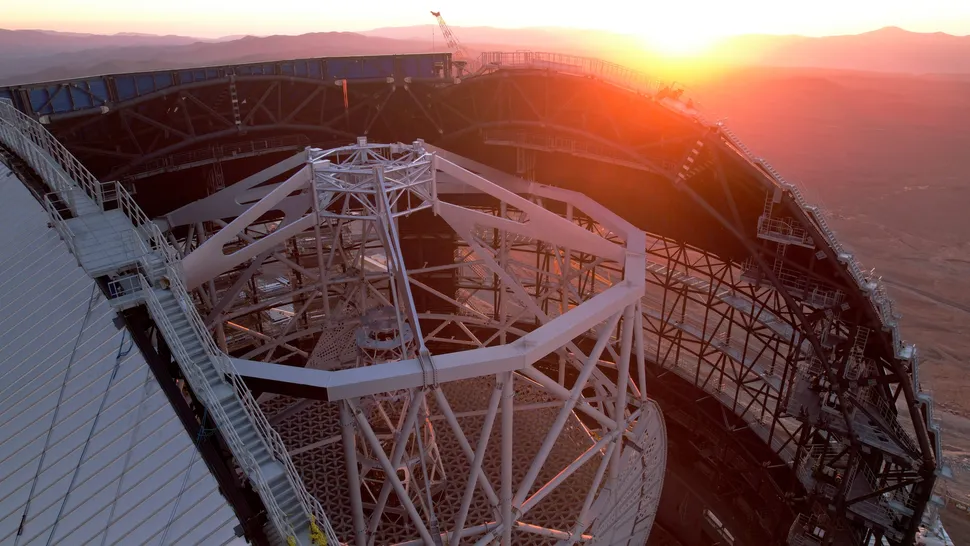The dome frame that will house the world’s largest telescope has been completed, marking another key milestone in the construction of the European Southern Observatory.
According to RCO News Agency, The European Southern Observatory’s (ESO) Very Large Telescope, the world’s largest visible and infrared telescope, is currently under development in Chile‘s Atacama Desert. This powerful telescope is expected to receive its “first light” by 2028.
According to Space, new images from the European Southern Observatory show that its domed frame is now complete, while the outer shield that fully encloses the telescope is still under construction. According to the observatory’s statement, aluminum plates will be added to the outside of the frame to protect the telescope from the extreme climate of the Atacama desert, including fluctuating temperatures.
The diameter of the dome is 93 meters or almost the size of a football field and it is 80 meters high. The dome will house a very large telescope that aims to observe exoplanets and their atmospheres, as well as measure the expansion of the universe.
The latest images, taken in January 2025, show cranes installing the outer aluminum layers, also known as cladding. Part of the dome will have large sliding doors that will be closed during the day and open at night, allowing the telescope to survey the sky.

Improvements have also been made to the polygonal structure at the base of the dome, which supports the telescope’s primary mirror (M1), and the “spider” structure above, which holds the secondary mirror (M2) in the dome.
The diameter of M1 will be 39 meters, while M2 is expected to be completed later this year and will be 4.25 meters in diameter. The telescope will have three smaller mirrors for a total of five mirrors when completed.
The European Southern Observatory also shared a close-up view of the inner frame of the “spider” structure, which is arched atop a base with six arms extending from its center. While the skeleton itself is complete, it is waiting to receive all the parts that make up the five mirrors. The M1 alone consists of 798 hexagonal glass-ceramic sections, each about five centimeters thick and about 1.5 meters wide. When fully assembled, M1 will be the largest mirror ever built for an optical telescope.

The central tower under the spider structure supports the three remaining mirrors of the large telescope. These components, which include the central tower, the spider structure and the polygonal base, all sit on what is called the elevation structure. This metal frame is 50 meters high and is designed to carry all five mirrors of the very large telescope and rotate so that the telescope can be aimed at different points of the sky.
end of message
RCO NEWS
















